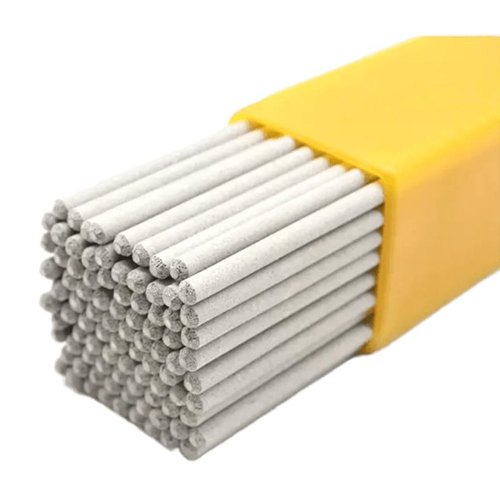CHARACTERISTICS & APPLICATIONS
íshín-316R has nominal composition (wt. %) of weld metal 18.5 Cr, 12.5 Ni, 2.5 Mo. These electrodes are used for welding Type 316 and similar alloys. They have been used successfully in certain applications involving special base metals for high-temperature service. For these high-temperature applications in the past, the carbon level would have been about 0.06%. For similar current or future applications, the use of E316H would ensure similar carbon levels. The presence of molybdenum provides creep resistance and increased ductility at elevated temperatures.
The covering for these electrodes generally contains readily ionizing elements to stabilize the arc for welding with alternating current. Electrode sizes 4.0 mm and smaller may be used in all positions of welding.
Storage and Drying Conditions: Hydrogen can have adverse effects on welds in some steels under certain conditions. One source of this hydrogen is moisture in the electrode coverings. For this reason, the proper storage, treatment, and handling of electrodes are necessary.
Holding Ovens: 125°C–150°C.
Drying Conditions: 250°C–425°C for 1 hour prior to use.
CHEMICAL COMPOSITION OF UNDILUTED WELD
| C | Cr | Ni | Mo | Nb+Ta | Mn | Si | P | S | N | Cu | Others |
| 0.08 | 17.0-20.0 | 11.0-14.0 | 2.0-3.0 | NS | 0.5-2.5 | 1.00 | 0.04 | 0.03 | NS | 0.75 | NS |
Single values are maxima, except where specified otherwise.
ALL-WELD-METAL MECHANICAL PROPERTIES
| Tensile Strength, MPa | Yield Strength, At 0.2% Offset, MPa | Elongation % | Lateral Expansion, mm | Charpy V-Notch Impact at NS°C, Joules |
| 520 | NS | 30 | NS | NS |
Single values are minimal.
ELECTRODE SIZE & WELDING CURRENT (AC and DCEP)
| DIAMETER, mm | LENGTH, mm | Amperes |
| 2.50 | 350 | 65-90 |
| 3.15, 3.20 | 350 | 90-120 |
| 4.00 | 350 | 120-150 |
| 5.00 | 350 | 160-200 |
WARNING: Safety and health information is available from many sources, including, but not limited to Safety and Health Fact Sheets listed in A11.3, ANSI Z49.1 Safety in Welding, Cutting, and Allied Processes published by the American Welding Society, 8669 Doral Blvd., Suite 130, Doral, FL 33166., and applicable federal and state regulations. The Safety and Health Fact Sheets are revised, and additional sheets added periodically.

